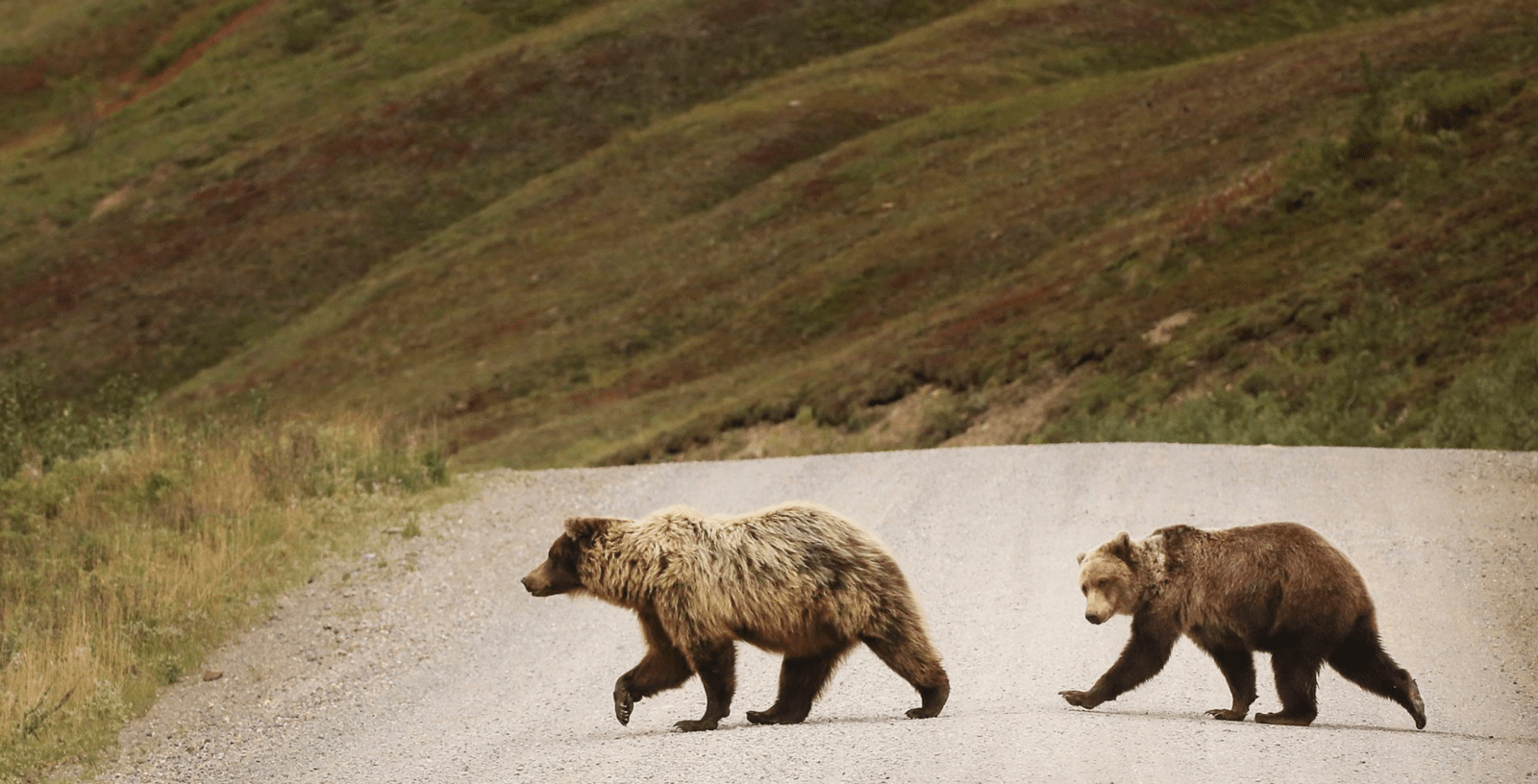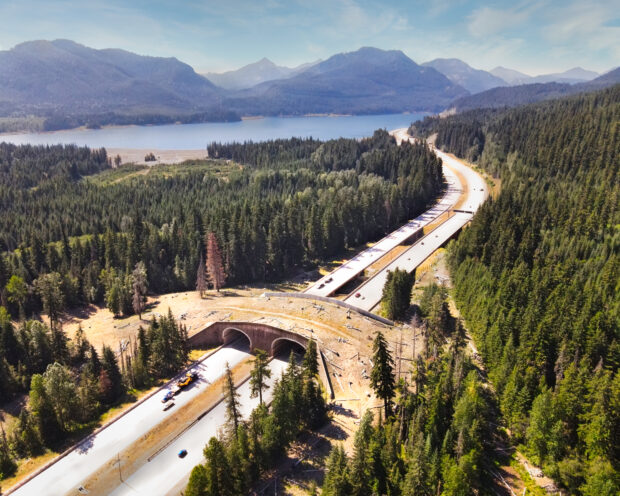We have much more to do and your continued support is needed now more than ever.
Wildlife Crossings Are a Win for Us All

At the beginning of this year, a cougar was spotted using a wildlife undercrossing along the I-90 corridor in Washington state. It was an exciting moment and a significant victory in the long-running effort to reconnect landscapes to support and ensure the survival of the region’s diverse wildlife. Wildlife crossings have many benefits, such as reducing vehicle collisions, maintaining animal populations, and boosting genetic diversity. According to the Washington State Department of Transportation, I-90 has one overcrossing and 10 undercrossings, and over 4,000 animals use these structures every year.
The story of the cougar in Washington, who safely made it to the other side of I-90, stands in sharp contrast to that of P-22, the most famous mountain lion in Los Angeles. P-22 made his home in Griffith Park, where the famed Hollywood sign frames the hills. He was rarely seen, but sightings of him captivated the hearts of many. Sadly, last December, when the California Department of Fish and Wildlife and the National Park Service brought the erratically behaving mountain lion in for a health evaluation, veterinarians confirmed that P-22 had been hit by a car. He was suffering from his injuries, along with a host of other health issues and had to be compassionately euthanized.
P-22 had been living in the smallest known home range ever recorded for a male mountain lion, according to a statement from Beth Pratt, California Regional Executive Director for the National Wildlife Federation. He would have had more options if Griffith Park was connected to other open space. But that would have required recrossing one of the freeways surrounding him, a life-threatening feat that likely wouldn’t end well a second time.
“Wildlife crossings are necessary to provide to both wildlife and people to reduce wildlife-vehicle collisions,” said Briana Abrahms, an assistant professor of biology at the University of Washington. She is the principal investigator of Abrahm’s Lab, which studies basic and applied ecology and how global change impacts the movements, behavior, and ecology of animal species.
Humans and wildlife: We can coexist
Humans can negatively impact animal behavior just by being present. We can induce fear responses in animals, which alters their behavior, Abrahms explained. She said that there is evidence that some animals living closer to human-dominated areas will become more nocturnal to avoid interactions with humans.
Habitat fragmentation is when we modify the landscape, for example, through bisecting animal habitats. One of the biggest ways that habitat fragmentation affects animal populations is by making it hard for populations to reach one another, Abrahms said. We isolate populations of species by creating barriers between different populations and fragmenting their habitats. According to Abrahms, this can reduce the ability of animals to find mates or exchange genes between different populations, which can lead to inbreeding depression.
Wildlife crossings connect habitats to combat fragmentation. Crossings go over or under major highways and roadways, helping prevent vehicle collisions. “I can’t think of many terrestrial species that wouldn’t benefit from wildlife crossings,” said Andrea Wolf-Buck, of Conservation Northwest. She explained that these crossings are used by larger animals such as elk, deer, and moose, and also smaller animals such as salamanders and toads. Even flying animals like bats prefer the safe passage provided by wildlife crossings.

A win-win-win for wildlife large and small
Another species that would greatly benefit from wildlife crossings is the grizzly bear. The federal government has restarted the process to restore grizzly bears in the Northern Cascades in Washington state. Their population has been sparse for some time now, so there will be a translocation project to move bears from stronger populations to the region.
“This will allow [grizzly bears] to move where they need to go. They need to be able to move around and meet other populations for genetic diversity,” explained Wolf-Buck.
One to two million large animals are hit by cars each year, including an approximately 26,000 human injuries and 200 fatalities occur as a result of these crashes. The U.S. Department of Transportation Federal Highway Administration also identified 21 federally listed endangered or threatened species in the United States for which road mortality is a major threat to survival.
“There’s a huge cost to these accidents,” Wolf-Buck said. It’s not only the injuries that are harmful, but the actual cost of road closures, first responders, and cleaning up the scene.
Conservation Northwest was successful in getting an undercrossing along Highway 97 in Eastern Washington in 2020. “We’ve seen a 91% reduction in deer vehicle collisions in this 12 mile stretch of road. Before that, it was about one deer a day being hit by a car,” Wolf-Buck explained.
“The maintenance of wildlife populations can directly benefit people by maintaining healthy ecosystems,” added Abrahms. “Animals can help reduce soil erosion and landslides. They can help keep our waters clean and keep other animal species from becoming overpopulated.”
Conservation Northwest has started a program called Cascades to Olympics, where they aim to open up wildlife passages to and from those two areas. They also help with the Cougar Project, which is addressing the isolation of cougars on the Olympic Peninsula.
“A wildlife crossing is such an important investment because everybody wins,” said Wolf-Buck.
Emilyann Franklin is a journalism student at the University of Washington.





















